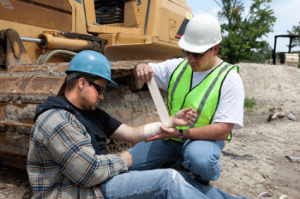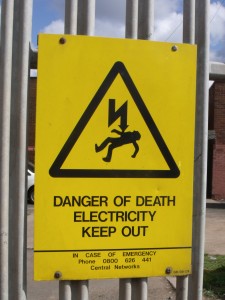The law tells us that drivers of autos can file personal injury claims, following an automobile collision, against the party responsible for causing the accident. But, what about passengers of autos? If injured in a car accident, do passengers go without any type of recourse for their injuries? The quick answer is “no.” Let’s take a moment and analyze this issue in a bit more detail.
Drivers are Responsible for Their Passengers
When passengers are riding in a motor vehicle, the driver of that vehicle has a legal duty to exercise reasonable care for the safety of the passengers while driving. Put another way, drivers are responsible for a passenger’s well-being for as long as the passenger remains as such in the vehicle. If a motorist drives in a negligent manner, and an accident results, any passengers in the vehicle that suffered injuries can seek to hold the driver liable for those injuries.
We must note here that automobile passengers can also suffer injuries in car accidents that are caused by other motorists. We must further note that negligent drivers are liable for the injuries of all the occupants in a car that they negligently hit. For example, assume John is driving a car and has no passengers. Further, assume that Sally is driving a second car and her friend, Beth, is riding as a passenger. If John is negligent in causing an auto collision with Sally, and Beth is injured in the accident, she can try to hold John liable for her injuries.
Can a Passenger File a Claim Against Multiple Drivers?
If an auto collision took place between two cars, and both drivers were responsible for the accident, then a passenger can make a claim against both drivers. Let’s return to John, Sally and Beth. Consider the factual scenario where John and Sally are approaching an intersection. John is speeding and fails to see Sally’s car. Sally though is not wearing her prescription eye glasses and does not observe John until the two vehicles collide. Theoretically, both John and Sally are at fault for the accident. If Beth was injured in the accident, she can file a claim against both drivers to recover damages.
Please know, however, that comparative negligence percentages will apply if a passenger successfully makes a claim against multiple drivers. We discussed the concept of “comparative negligence” in a previous entry. In Washington, this concept basically states that an injured party, in an automobile accident, will be awarded a damage amount in proportion to the percentage of fault of the other driver. If Sally had no passenger and it was found that John was 80% at fault in our hypothetical collision, Sally would receive 80% of any compensation she sought in a personal injury claim.
For collisions involving passenger injuries, these same percentages and rules apply. Let’s reintroduce Beth into our accident scenario. Assume she suffered $50,000 in damages and filed a claim against both John and Sally. It was determined that Sally was 20% at fault for the collision and John was 80% at fault. Under the concept of comparative negligence, Sally would owe Beth $10,000 (or 20% of $50,000) and John would owe Beth $40,000 (or 80% of $50,000).
What Happens if a Passenger is Related to a Driver?
We really do not like to cause rifts in familial relationships and no parent ever enjoys being sued by a child, or vice versa. Thus, we have to consider the situation where a driver is negligent in a car accident and was driving while a relative was riding in the car. In these circumstances, the relative/passenger is typically deemed an insured under the driver’s automobile insurance policy; and resultantly, the passenger can pursue recovery options under that policy.
Other Insurance Considerations
Filing a personal injury claim against a negligent driver in court is definitely not the only option available for a passenger who has suffered injuries in an accident. Depending on who was at fault for the collision, the passenger can make a claim against either of the following liability insurance policies:
- The policy of the driver or owner of the car the passenger was riding in, or
- The policy of the driver or owner of another vehicle involved in the accident.
Depending on the facts involved, passengers may even be able to make multiple insurance claims.
Phillips Law Firm Can Help
Passenger injuries following an automobile accident can be severe. To make matters worse, passengers may experience several difficulties in trying to recover damages from these accidents. If you have suffered injuries as a passenger in an automobile collision, please do yourself a favor and let our firm’s experienced attorneys help. We can easily answer any of your questions, and if necessary, they can begin building your case today.

 Previously we examined who’s responsible for injuries suffered in
Previously we examined who’s responsible for injuries suffered in  Challenges abound for today’s young workers. High unemployment rates mean young workers face greater competition from adults for jobs traditionally reserved for teens and 20-somethings. Young workers must also balance employment demands with those demands imposed by family, school or even other jobs. Further, today’s young workers are more likely to get hurt on the job in comparison to working adults.
Challenges abound for today’s young workers. High unemployment rates mean young workers face greater competition from adults for jobs traditionally reserved for teens and 20-somethings. Young workers must also balance employment demands with those demands imposed by family, school or even other jobs. Further, today’s young workers are more likely to get hurt on the job in comparison to working adults. We’ve said it before and we’ll say it again…the law can be complex and confusing. This is especially true in the realm of
We’ve said it before and we’ll say it again…the law can be complex and confusing. This is especially true in the realm of